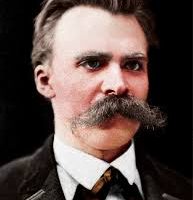
BY KINDEYE FENTA (Ph.D)
Iranians are eagerly awaiting to celebrate “Nowruz” Persian New Year Festivity days from now. Food items and other assortments of the event are already being purchased and made available to this festive day. But, what do you know about “Nowruz”?
A handful of countries have their own unique calendar to celebrate it in a unique way. As Ethiopians celebrate the beginning of each year on September 11, the Iranians observed it on March with a special ritual. Nowruz, the Iranian New Year, is one of the oldest and most cherished festivities celebrated for at least 3,000 years making it the oldest calendar on earth. It originates from in the ancient Iranian history and Persian language as, “now or no” in Nowruz means new and ruz or rooz is day, Nowruz altogether is a ‘new day’.
The celebration is not connected to religion but it is based on astronomical celestial event. During ancient times, Persian kings greatly emphasized the importance of this event and invited people from around the empire and the world to the royal court for celebrations and receiving gifts. Historical records in Iran show that representatives of Habesha attended the Persian New Year ceremony in the capital of Achaemeins, Persepolis in 500 BC. It begins at the spring equinox – the moment when the sun crosses the equator and day and night is of equal length. It always begins on the first day of spring, March 21st of each year. It is the natural turn of the year happens in that it symbolizes the shift from the winter to the spring. Nowruz focuses on the philosophical aspects of light conquering darkness, good conquering evil, the warmth of spring conquering the cold winter. It provides the opportunity for rethinking, restarting and remaking not only for individuals but also for the Nation as whole.
Since the ancient times, Iranians observed it with varying degree; sometimes colorfully and with much earnest on other times with little fervor depending on the sociopolitical and economic realities that the country practiced throughout its long history. As the festivity is embedded in their culture, there is no time that the Iranians failed to hold the event. Even in times of difficulty and war, Nowruz has become a symbol of resistance that often reflected in the common greeting Nowruz pirooz, which means “Nowruz victorious”. It is a strong testimony to Iranian rich civilization, national characteristics and history. It proves how a nation with its irreversible determination to endure, and even flourish, through periods of devastation, political chaos, hardship and oppression. That is why Persians have applied the Nowruz spirit for centuries, to every dark challenge that has come their way while serving as beacon of hope and jubilation in good times of their history. It is this reality that made Nowruz spirit far more than just a New Year celebration over the course of history.
Currently, Iranians and people in the Region enthusiastically celebrate the Nowruz festival, irrespective of their age, language, gender, race, nationality, religion or social status as this festivity knows no boundary. It is celebrated as the beginning of the New Year by more than 300 million people all around the world from Mongolia to the Balkans. Several nations, including Iraq, India, West China, Turkey, Mongolia, Russia, Pakistan, Afghanistan, Tajikistan, Uzbekistan, Azerbaijan, Kazakhstan, and Kyrgyzstan adorn this ancient festivity. It has become a cultural heritage to all humanity as the United Nations General Assembly at its 64th session, on 23 February 2010, adopted Resolution A/RES/64/253 entitled “International Day of Nowruz” by which it welcomed the inclusion of Nowruz by the United Nations Educational, Scientific and Cultural Organization (UNESCO) in the Representative List of the Intangible Cultural Heritage of Humanity. Nowruz’s inscription in the UNESCO list reaffirms it relevance to humankind as it constitutes the collective heritage of mankind, providing a source of inspiration and progress for humanity at large. It also highlights that Nowruz’s significant role in strengthening the ties among peoples based on mutual respect and the ideals of peace and good-neighborliness.
Prior to Nowruz, Iranian families start the yearly spring cleaning of their homes. The activity sometimes becomes monstrous as it involves all members of the family to engage in vigorous activity to give a thorough scrub to the whole household, giving the walls a fresh paint, washing every piece of carpet and curtain in the house and even buying new furniture or placing the old one in new arrangements around the house.
The Nowruz also involve a ‘‘Chaharshanbe Suri’’, which falls on the eve of the last Wednesday of the year, and includes jumping over bonfire; Going to the cemetery on the last Thursday of the old year to remember the ones who have passed away; New Year shopping; and visiting relatives within 13 days starting from Nowruz until ‘‘Sizdeh Bedar’’, which is the ending of the festivity.
Haft-sin (The Seven S’s), a traditional table setting that symbolizes life, fertility, and love as a whole, and requires all members of the family to gather around the moment the New Year begins are the other integral part of this colorful event. The Seven S’s are: Seeb (apple); symbol of beauty and love, Seer (garlic); symbol of health, Serkeh (vinegar) symbol of progress and change, Somaq (sumac); symbol of patience, Samanu (sweet pudding); symbol of abundance Sabzeh (sprouts); symbol of rebirth and Senjed (Persian olive) symbol of stability and strength.
Among the additional complementary items are the epic book of Shahnameh, poetry of Hafez and the holy book of Quran (for the Muslims), mirror, candles, coins, goldfish, hyacinth flowers, and painted eggs all symbolizing wisdom, a mirror symbolizing the sky and mindful self-reflection, candles symbolizing the good light and divinity, coins symbolizing wealth, goldfish symbolizing life and the last month of the Persian calendar, hyacinth flowers symbolizing a heavenly scent with the arrival of spring and painted eggs symbolizing fertility and creation.
The Nowruz celebrations ends on the thirteenth day with an event called Sizdeh Bedar meaning the thirteenth outdoors. On this day, families arrange picnics and spend time in parks and in the nature while enjoying the arrival of spring. In Sizdeh Bedar, people usually throw the sprouts they used during the festivity into the water (rivers, lakes, ponds, seas etc.) which makes it similar to parts of the Irrecha celebration of the Oromo people of Ethiopia. In general, Nowruz highlights the fundamental contrasts of good and bad and the appreciation of good thoughts, good words and good deeds.
The Embassy of Iran in Ethiopia is also in preparation to mark this day in its premises. The embassy also sends its warmest wishes to those Iranians and people around the world observing the ancient holiday of Nowruz. Nowruz Mubarak!
Editor’s Note: Dr. Kindeye is an Economic and Political Officer of the Embassy of the Islamic Republic of Uran. He can be reached at:
Kindfenta77@gmail.com
The Ethiopian Herald 19 March 2023




